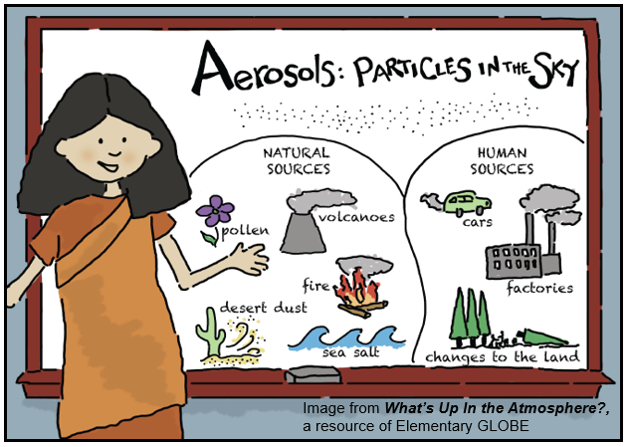Observations Related to Aerosols - Clouds Protocol
Observations Related to Aerosols
Aerosols are related to clouds because aerosols can act as cloud condensation nuclei. In addition, aerosols can affect the sky color or visibility aspects of cloud observations.

Why is it important to study aerosols?
Aerosols are very small solid and liquid particles suspended in the air. They can have a significant impact on health and climate and can contribute to air pollution. There are multiple names for aerosol measurements including aerosols, particulate matter (PM), Aerosol Optical Depth (AOD), and Aerosol Optical Thickness (AOT).
Aerosols come from natural sources such as bacteria, smoke, sea salt, pollen dust, ice and tiny water droplets. They can also come from human sources such as cars, factories and changes to land. They can form in one part of the world and travel to other parts of the world affecting air quality many miles from the source.
Studying aerosols helps scientists make better predictions about where they might travel and their effects on health and the health of our environment. Aerosol measurements can help scientists validate satellite observations, observe local pollution events where there are no other instruments and explore remote locations where data are rare.





